From the May 2021 issue of Apollo. Preview and subscribe here.
An empty restaurant is a miserable sight. The view of just one or two couples attended punctiliously by a waiter, and perhaps a solitary diner with a book, is rarely an invitation to cross the threshold. You can almost hear the whispers through the plate-glass windows, sense every clink of cutlery on crockery. The vacant dining rooms of the past year are even worse, their chairs bowed against tabletops as though praying for restauration to resume. What is a restaurant without people?
One palliative for glum gourmands is the art of Daniel Spoerri (b. 1930), the Swiss-Romanian artist whose most celebrated works encapsulate the adventures and pleasures of dining in good company. These are the tableaux pièges (‘snare pictures’) that Spoerri began to make in the 1960s, for which he fixed in place the detritus that was left on a table at the end of a meal: used napkins, empty bottles, dirty plates and coffee cups, overcrowded ashtrays. To me, they have always looked like casual monuments to bonhomie, to that mood – before the bill arrives – in which the conversation might continue for hours. Spoerri took it up and preserved it, flipping the glued ensemble on its side to hang on the gallery wall: a simple but inspired gesture by which table turned tableau.
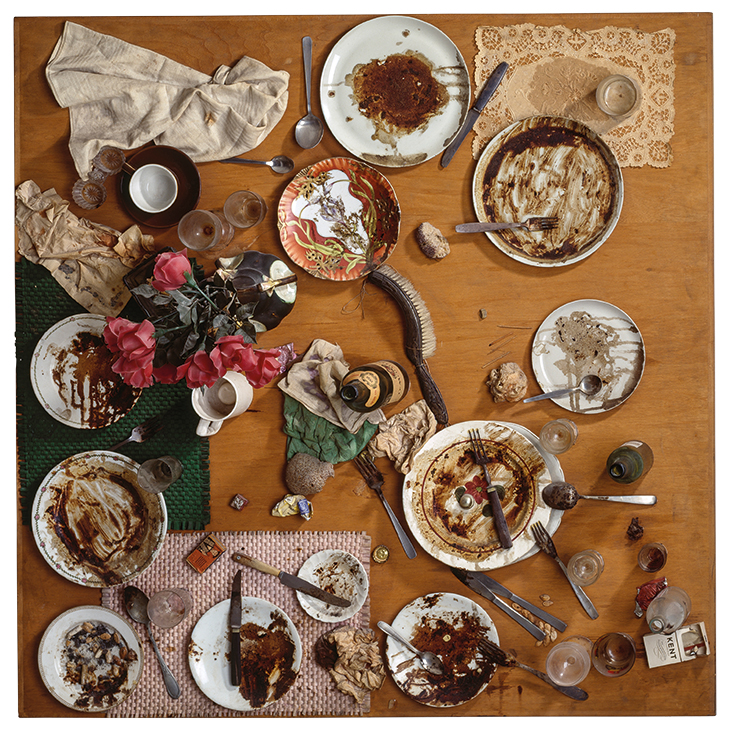
Restaurant de la City-Galerie (Fallenbild) (1965), Daniel Spoerri. Hamburger Bahnhof, Berlin. Photo: Stefan Rötheli, Zürich; © Daniel Spoerri und Bildrecht Wien, 2021
A number of Spoerri’s snare pictures are currently on display in a retrospective of his work at the Kunstforum Wien (until 27 June), including several that he made as the proprietor of Restaurant Spoerri, which opened on the Burgplatz in Düsseldorf in 1968. Spoerri had been a professional ballet dancer who fell in with artists, becoming one of the founding members of the Nouveau réaliste movement in 1960. That year, he began glueing objects to surfaces; three years later, he reinvented Gallery J in Paris as a restaurant for a fortnight, doing 30 covers and one tableau piège every evening. The waiters were art critics.
‘I lived art,’ Spoerri says in an interview in the catalogue for his exhibition in Vienna, noting that he never studied art or art history as a young man. In making works from everyday objects, he was not so much reacting against aesthetic traditions as finding artistry in the very stuff of existence. Little wonder, then, that food became such an important motif to him, not only through the display of dirty dishes but also – in what he called ‘Eat Art’ – through unorthodox approaches to all manner of aspects of eating and drinking. During an extended stay on the Greek island of Symi in 1966–67, he wrote an offbeat ‘diary/cookbook’, Mythology & Meatballs (as it was titled in an English edition of 1982). He collaborated with Tony Morgan on a film that rewinds the life cycle of a steak. And in the 1980s he gathered handwritten recipes for offal dishes from fellow artists, assigning an organ or animal product to each: tripe to Roland Topor, for example, and fat to Dieter Roth.
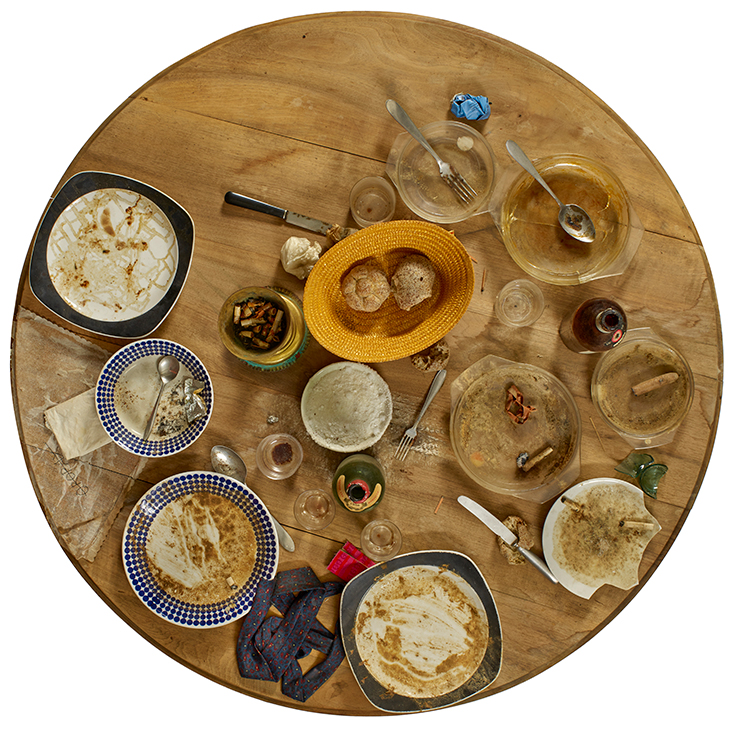
Restaurant de la City Galerie (1965), Daniel Spoerri. Bischofberger Collection, Männedorf-Zurich. © Daniel Spoerri und Bildrecht Wien, 2021
The Restaurant Spoerri was less experimental – it was a restaurant, at least. ‘Many people knew I was an artist,’ Spoerri has said, ‘but plenty of others just came to eat.’ One draw was the menu, which included high-quality meat supplied by one of Spoerri’s collectors as well as unusual ingredients that weren’t widely available in Düsseldorf at the time. That sometimes meant polenta, but it might also mean rattlesnake or – as Spoerri recalled in an interview from 2015 – an elephant’s trunk. The restaurant, he says, served ‘everything that you can eat, but normally do not’.
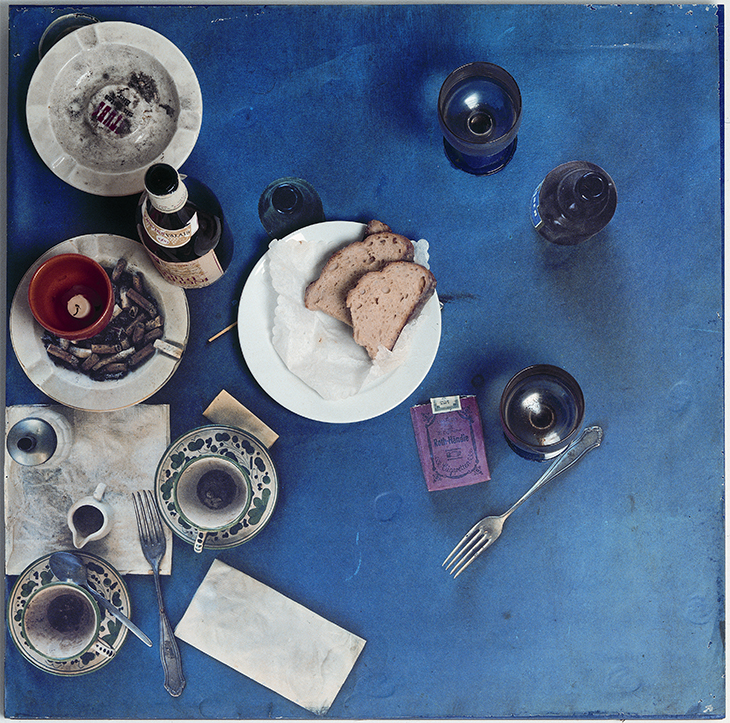
Tableau Piège, Restaurant Spoerri (1972), Daniel Spoerri. Photo: Bündner Kunstmuseum Chur; © Daniel Spoerri und Bildrecht Wien, 2021
For 1,000 Deutschmarks, diners could order their table to be preserved as a tableau piège. More often, Spoerri would interrupt someone’s meal at random, preferring to fix a tabletop in a ‘found situation’, an arrangement that had been dictated by chance: any table as Spoerri encountered it was, he says, ‘already a story’. To look at the residue of these meals now, in some cases almost 60 years after they took place, feels to some degree like walking into Miss Havisham’s dining room at Satis House: the tableware has dated, and so have the cigarettes. But the tableaux pièges also retain their vitality, the joy of their moment. They are maps of other people’s friendships and relationships, drawn in bustling restaurants and on full stomachs.
From the May 2021 issue of Apollo. Preview and subscribe here.
Unlimited access from just $16 every 3 months
Subscribe to get unlimited and exclusive access to the top art stories, interviews and exhibition reviews.

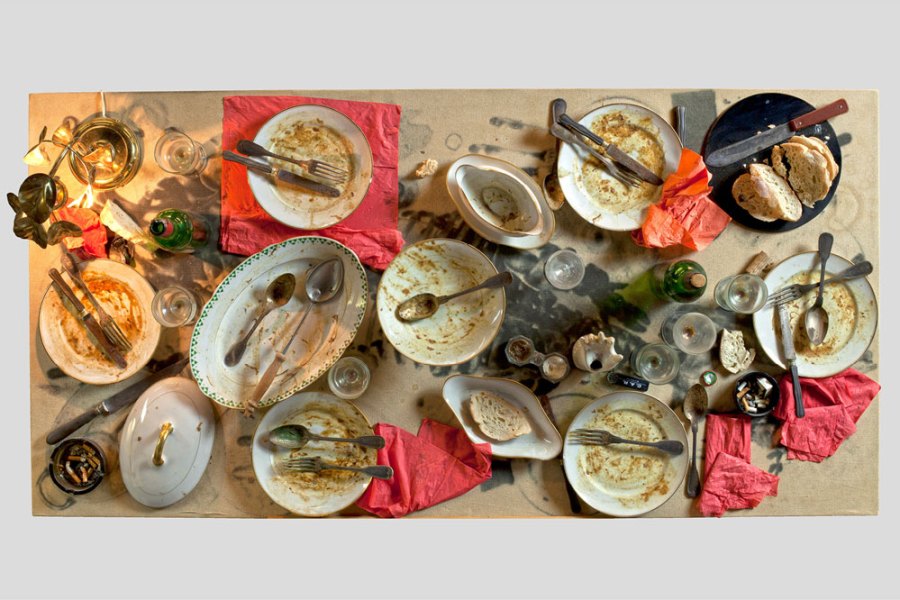
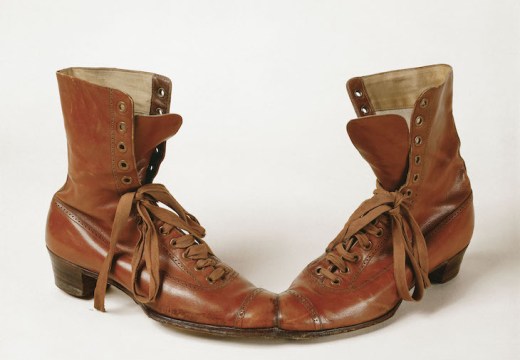
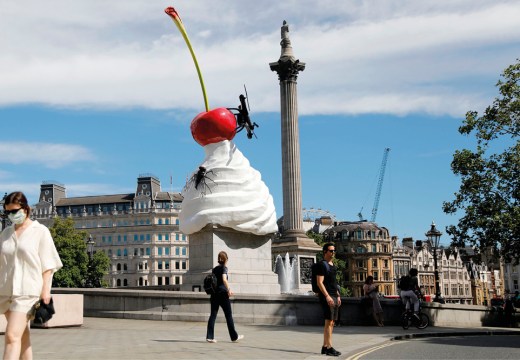
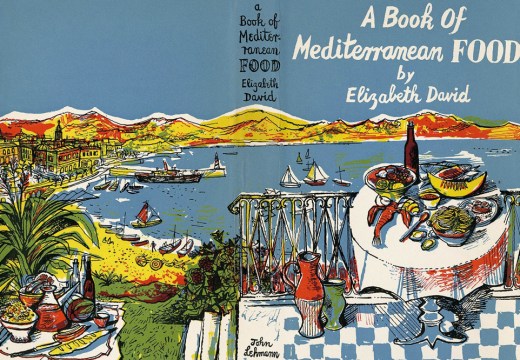









![Masterpiece [Re]discovery 2022. Photo: Ben Fisher Photography, courtesy of Masterpiece London](http://www.apollo-magazine.com/wp-content/uploads/2022/07/MPL2022_4263.jpg)
Has the Fitzwilliam got its rehang right?